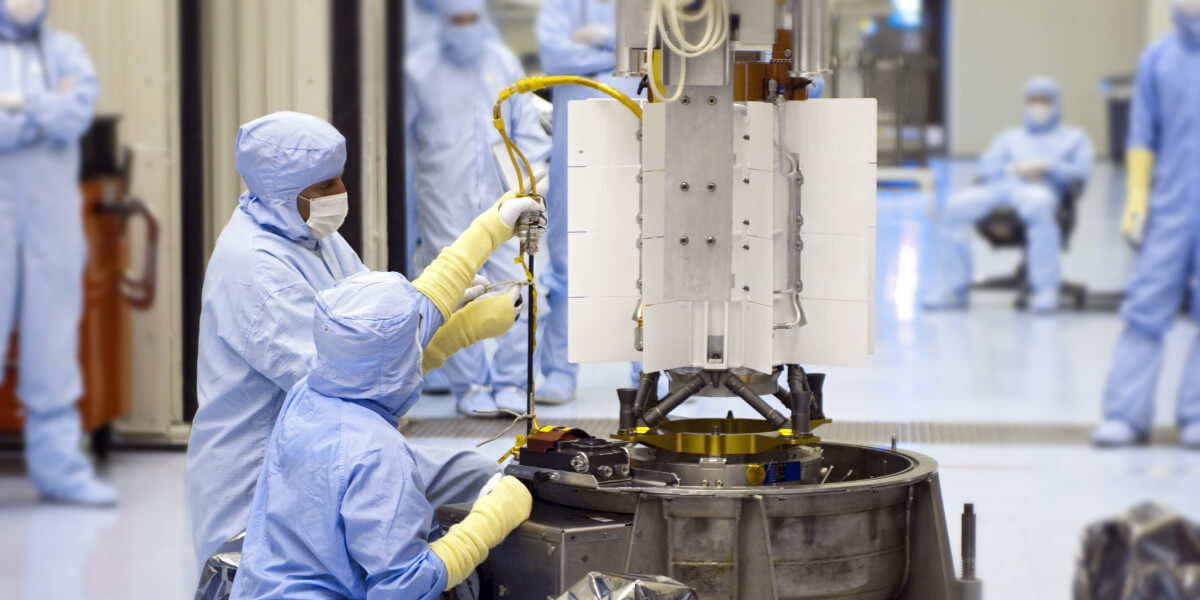
NASA crew preparing a multi-mission radioisotope thermoelectric generator (MMRTG) for the Mars Curiosity rover. Image/NASA
When Khooshboo Dani grew up dreaming of traveling through space and building something among the cosmos, she never considered what would power her voyage.
Inspired by Neil Armstrong’s biography and trips to the Kennedy Space Center in Florida and the Boeing’s Factory in Seattle, she decided to pursue a graduate education in astronautical engineering after completing a bachelor’s degree in aerospace engineering from Amrita University in India. Now, as a master’s student in Viterbi’s Department of Astronautical Engineering (MS ’19) and former member of the Liquid Propulsion Lab, a student-led rocket building group, she has developed an interest in power systems.
This summer, Dani spent her time as an intern for the Center of Space Nuclear Research (CSNR) at the Idaho National Laboratory, a group which develops advanced nuclear systems for space travel. She and her research team of four other college students were tasked with determining how nuclear fuel interacts with the surrounding materials and how this interaction can influence the efficiency of energy conversion.

Khooshboo Dani. Photo/Khooshboo Dani
While short distance space missions can use solar panels to generate power, for deep space missions and those requiring more power, solar power isn’t enough. Instead, they must use nuclear energy created by radioisotope thermoelectric generators, or RTGs.
“Basically, the principle it works on is that decay of the radioactive material, that in our case is plutonium-238, produces heat which is converted into electrical energy using thermocouples,” Dani explained.
Newer RTG designs are able to provide power for multiple missions, called MMRTGs. These have a modular design that generates power in smaller increments.
The first spacecraft to use a radioisotope power supply was the Transit satellite launched in 1961. Since then, RTGs have been used in the Voyager missions and the Cassini orbiter, among many others. More recently, an MMRTG was used aboard the Curiosity Mars rover and will be used in the future Mars 2020 rover.
An MMRTG typically has eight heat source modules inside it, each containing a fuel pellet made of plutonium-238. To shield the radioactive isotope, the modules are encased in a graphite shell that is lined with a protective coating. Dani and her team were tasked with analyzing how the molecules produced during the decay of plutonium-238 diffuse out and react with the surrounding materials.
“Plutonium-238 is a strong alpha emitter which produces helium gas,” said Dani. “These helium molecules, over a period of time, create canals in the pellet which would in turn affect the power generation rate.”
This decay also releases oxygen molecules that could make the graphite shell brittle and vulnerable during a potential impact. During the one or two years these capsules spend assembled, waiting for a mission, there is plenty of time for chemical reactions to hinder the component.
“The industry understands the physics behind it, but they are not sure how it behaves. So, what we did was build a model to help them in analyzing how things would happen inside the pellet before it is even launched,” Dani said.
The team, consisting of students from backgrounds ranging from chemical engineering, to materials science, to nuclear engineering, created the framework of a computer model that allows the CSNR scientists to change the initial conditions of parameters like temperature and pressure to see how the gas dynamics would affect the material interaction. Their work could help improve the future designs and considerations of MMRTGs.
While mankind’s history with nuclear power has been fraught with devastating weapons such as the Atomic Bomb and catastrophic disasters like Chernobyl, no other current energy source can produce a similar amount of energy per unit volume.
“As of now, there is no other practical technology that people have found besides nuclear. I think until we find a better technology to power our spacecrafts on deep space missions, nuclear is the present and might be the future,” Dani said.
Published on September 20th, 2018
Last updated on September 24th, 2018











